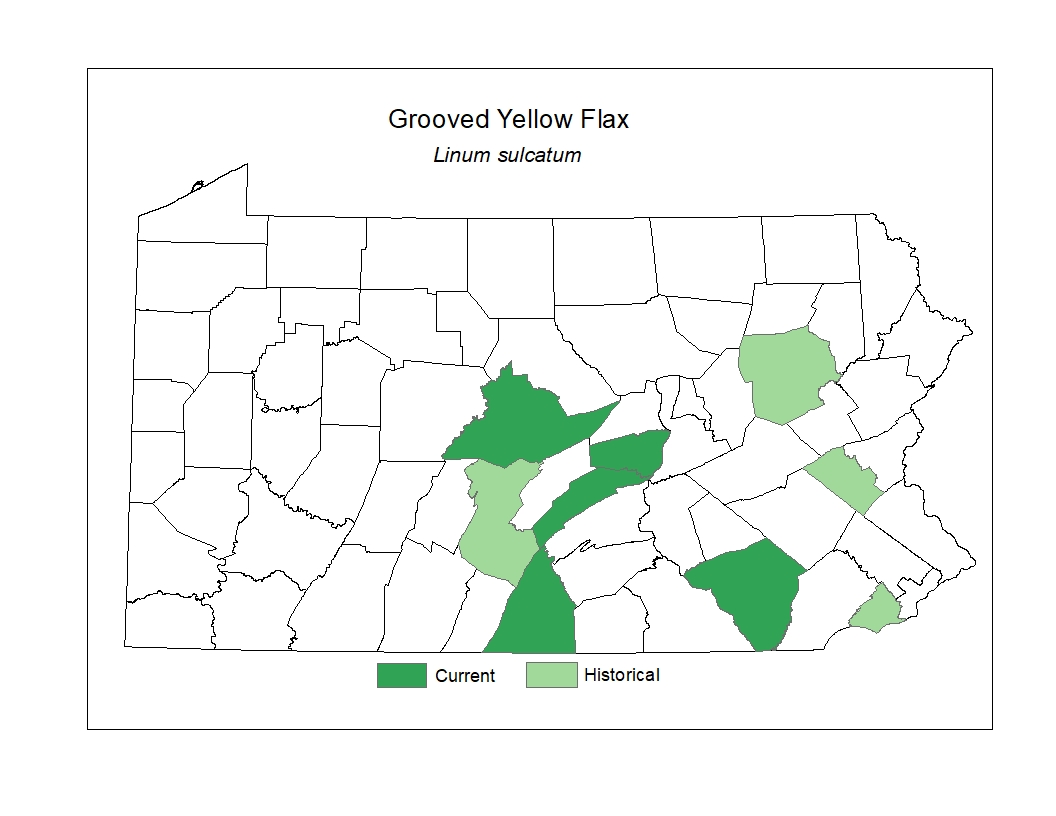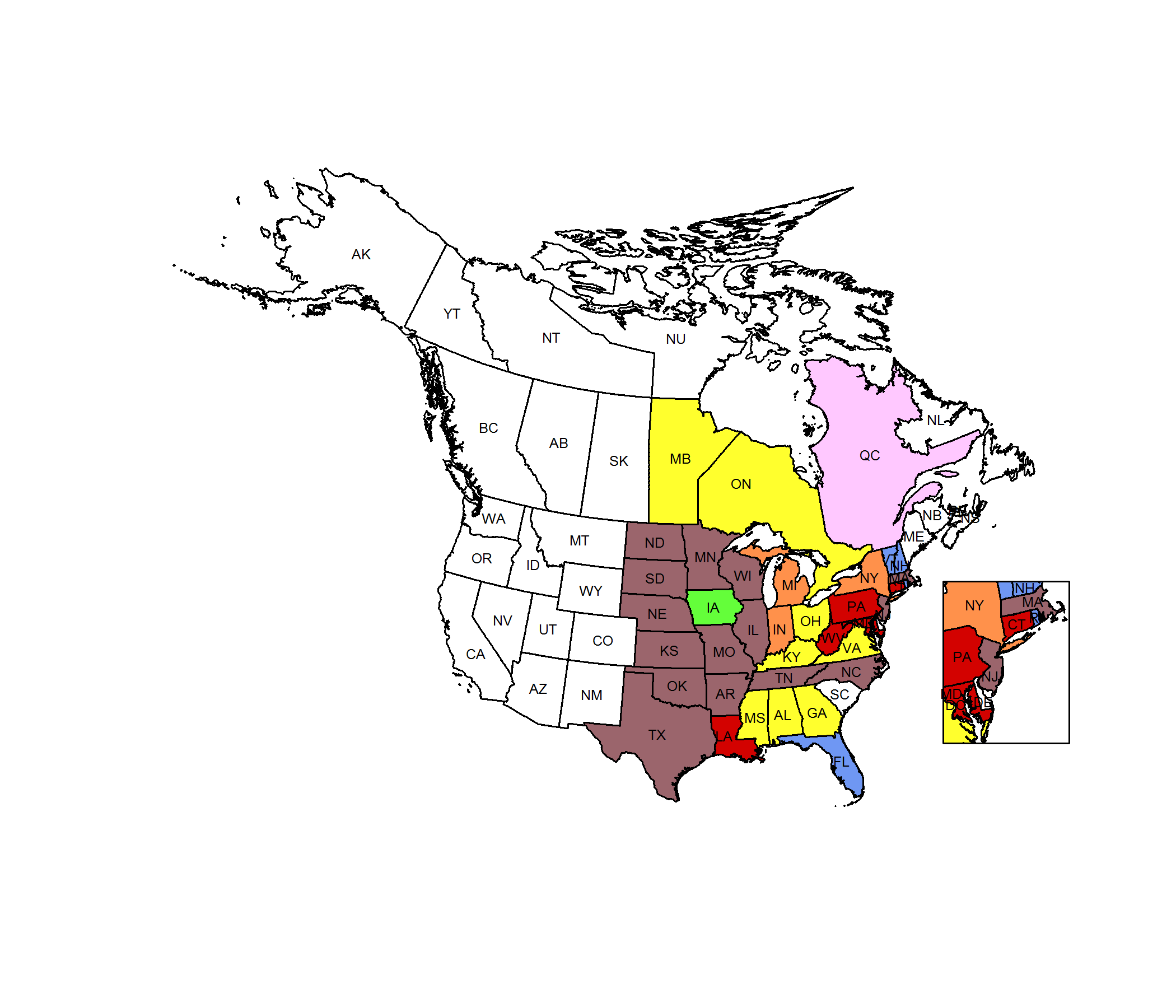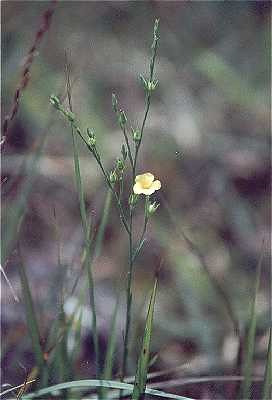 Species Factsheets
Species Factsheets
Linum sulcatum
Grooved Yellow Flax
State Status: Pennsylvania Endangered (PE)
PBS Status: Pennsylvania Endangered (PE)
Federal Status:
Global Rank: G5
![]() rank interpretation
rank interpretation
State Rank: S1
Did You Know?
When not in flower this species is a bit inconspicuous but can be easily identified because of the black glands at the base of each leaf.
Description
Grooved yellow flax (Linum sulcatum) is an erect annual herb that grows up to 75cm tall. The common name refers to its grooved stems which are purplish near the base. The leaves grow alternately along the stem. They are linear to oblong, have smooth margins, and attach directly to the stem without a petiole. There are two distinctive blackish glands on the stem near the base of each leaf. The flowers are yellow, have five smooth petals, and are roughly one to two cm wide. They are held in loose clusters near the top of the stem and bloom from May to September.
Rank Justification
Critically imperiled in the nation or state because of extreme rarity (often 5 or fewer occurrences) or because of some factor(s) such as very steep declines making it especially vulnerable to extirpation from the state.
PABS
The PA Biological Survey considers the grooved yellow flax to be a species of special concern, based on the relatively few occurrences that have been confirmed and the very specialized habitat. It has been assigned a rarity status of Endangered.
Habitat
In Pennsylvania, it can be found growing in scattered sites on sandy barrens.
Survey Dates
Flowers June - July; fruits persist into late November
Distribution

Threats
Grooved yellow flax populations are threatened by habitat loss and succession. Over time, the open nature of the habitats required by this species may be lost due to encroachment by woody and invasive species. Other potential hazards include trampling, incompatible land management, and habitat fragmentation, which limits seed dispersal.
Management
Maintenance of known populations and preservation of the sandy barrens communities where grooved yellow flax grows will be crucial to its survival. Removal of overgrowth and invasive species with the integration of fire regimes, when appropriate, will help to preserve the open nature of the sites. The management of the known sites requires long term monitoring of populations. Potential sites for restoration should be evaluated.
Conservation Status Map

NatureServe. 2017. NatureServe Explorer: An online encyclopedia of life [web application]. Version 7.1. NatureServe, Arlington, Virginia. Available https://explorer.natureserve.org.
https://www.missouriplants.com/Yellowalt/Linum_sulcatum_page.html
- NatureServe. 2018. NatureServe Explorer: An online encyclopedia of life [web application]. Version 7.1. NatureServe, Arlington, Virginia. Available at https://www.natureserve.org/explorer
- Pennsylvania Natural Heritage Program. 2018.
- Rhoads, A.F. and W.M. Klein, Jr. 1993. The Vascular Flora of Pennsylvania. American Philosophical Society, Philadelphia, Pennsylvania. Rhoads, A.F. and T.A. Block.
- 2007. The Plants of Pennsylvania: An Illustrated Manual. 2nd edition. University of Pennsylvania Press, Philadelphia, Pennsylvania.







